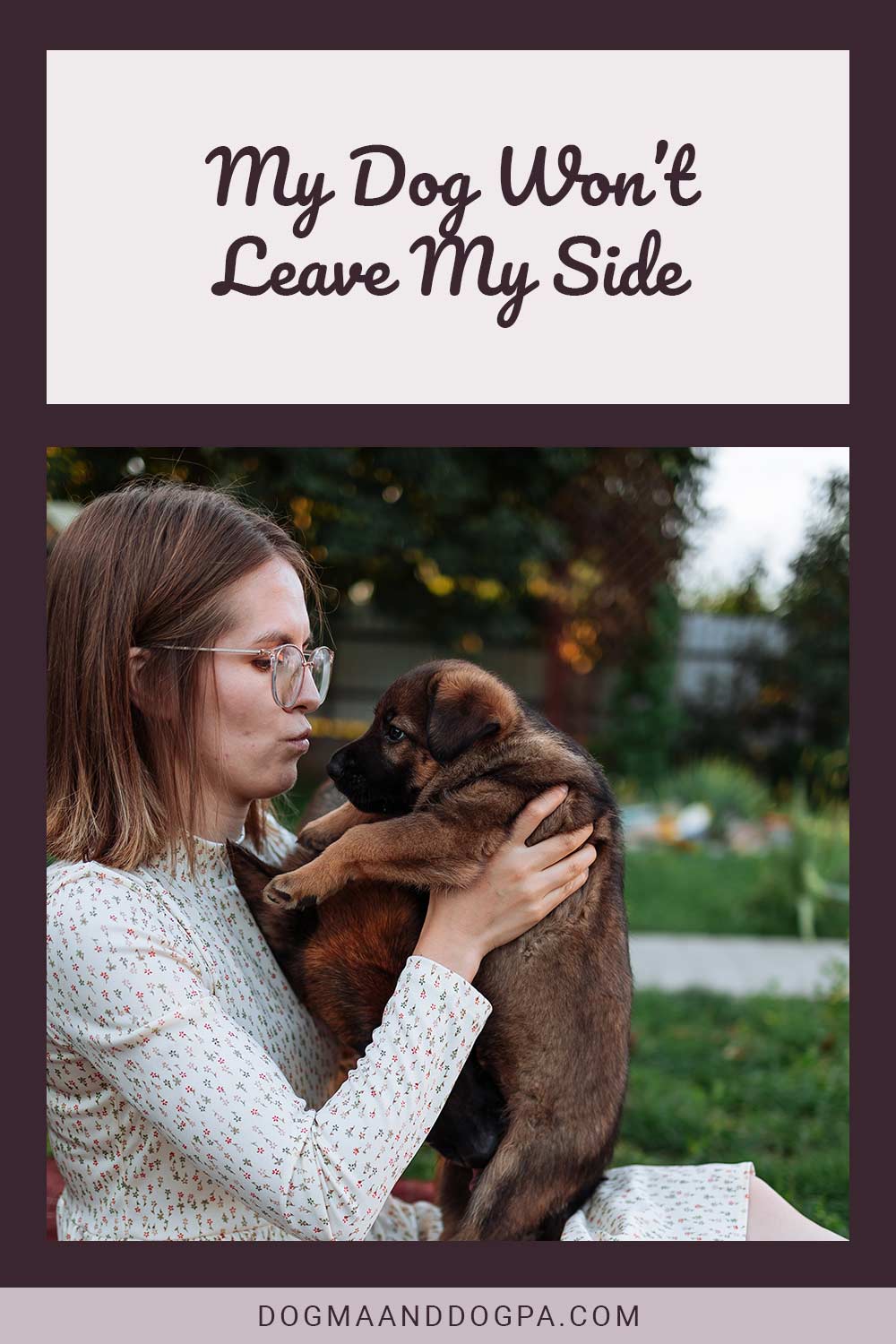WomeChanges in your dog’s behavior, no matter how subtle they may seem, are always cause for concern and should be addressed immediately by any responsible pet owner.
Having your dog suddenly become extremely clingy to you for no apparent reason is a common but concerning behavior change that many pet owners may observe but dismiss as unimportant.
Some dogs are naturally “velcro” dogs, never wanting to be far from their owners. However, if your dog has suddenly become extremely clingy, there may be cause for concern.
What does it Mean?
Suppose your dog refuses to leave your side suddenly. In that case, it may be because of a fear response, because you have something they want, or because they are experiencing the early stages of separation anxiety.
However, there are other possible causes, such as illness, boredom, old age, or a reaction to a new way of life.
What to Do About it?
Behaviorists recommend leaving an interactive toy with your dog if you suspect it suffers from separation anxiety when you’re not around, like leaving the radio or TV on while you’re not there.
Desensitization is a behavioral solution to separation anxiety and may be used if distraction techniques fail.
This is when you step outside for just a few minutes and then return inside. The duration of the owner’s absence is gradually increased over a series of trials in the hope that, eventually, the dog will come to accept your absence and know that you will return.
How to Work with Your Dog to Fix it?
Although it’s beneficial for dogs to look to their owners for company, commands, and cues, it’s not good for anyone involved when the dog becomes obsessively clingy or watchful. This is especially worrisome if the dog is timid or avoids all but one person.
The dog may not have been properly socialized, or it may have formed an unhealthy attachment to one particular person. As a result, there is a higher likelihood that these dogs will exhibit undesirable behaviors like anxiety, fear, aggression, or phobias.
When a dog shows signs of anxiety, one of the most obvious is when he or she follows you around but avoids all human contact. If you, their world, are not with them at all times, they may start to cry or pace nervously.
You can do a few things to help your dog relax and learn to relax without your constant presence if he or she suffers from separation anxiety.
Socialize your Dog with Other People
You can help your dog overcome its attachment to you by exposing it to people who are just as kind as you are.
Have a friend or family member help out with feeding, playing with, training, or walking your dog to encourage socialization. Even if you’re a single person living in an apartment, you can still have visitors over who can play with your dog.
Set Boundaries
If you have a velcro dog who needs to follow you around at all times, it’s important to reassure him or her that the world will not end if you leave their immediate vicinity. This can be achieved through the establishment of appropriate limits.
One such practice is leaving the door closed when you go to the bathroom or another room and planning to return within a few minutes. Your dog will eventually learn that just because it can’t see you right now doesn’t mean you’ve abandoned it.
Do Not Reward Negative Behavior
Anxious dogs will resort to any means necessary, from whining to eliminating in the wrong places inside the house, to get your attention. One solution is to stop rewarding your dog when it exhibits needy behavior.
For example, when you leave the room and your dog starts to cry, you shouldn’t reinforce that behavior by comforting him. When negative actions are rewarded, it reinforces the behavior because it gets the person’s attention.
Desensitize your Dog
It’s possible that your “Velcro dog” is anxious whenever you reach for your briefcase or jingle your car keys. Your dog will thank you for your efforts to desensitize him to these triggers, making it easier for both of you to venture out of the house.
You can help relieve your dog’s anxiety by not making a big deal and practicing those rituals often without leaving.
For example, take the time to get ready to leave several times a day but never leave the building by grabbing your car keys, coat, and briefcase. Soon enough, your dog will learn to associate these actions with you staying rather than you leaving.
How Often Should You Practice Separating?
Of course, you do not want to put too much pressure on your dog all at once. That will only stress them out further and make them more reluctant to leave your side.
Start off by leaving them once or twice a day for up to ten minutes. Then build that time apart gradually.
How Long is it Going to Take?
This is not an overnight fix. You are going to need time and patience when trying to fix your separation anxiety in your dog. It depends on how bad their separation anxiety is, how long it’s been allowed to continue, the age of the dog, and the type of dog.
Some dogs can learn more quickly than others and are more trainable to independence than others. Again, any dog owner will need a lot of patience when trying to fix separation anxiety.
Final Thoughts on Your Dog Won’t Leave Your Side
Separation anxiety can be a problem for the dog and the owner. But it’s not an impossible task to relieve the dog of that problem.
There are various methods that can be used to ease separation anxiety in dogs, but no matter which method you use, a lot of patience and dedication are needed.

